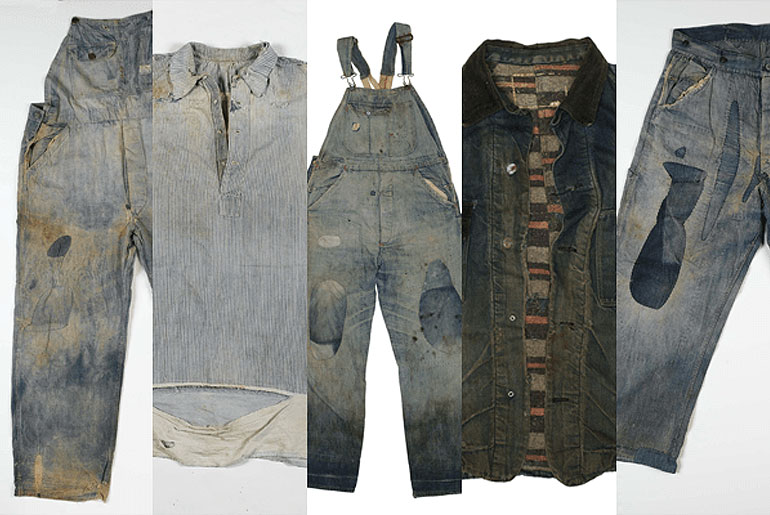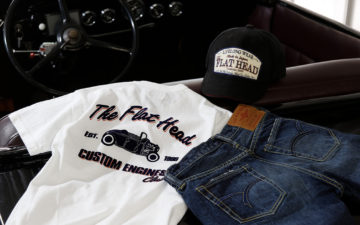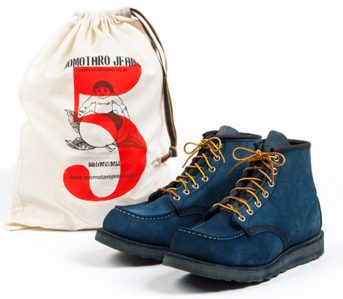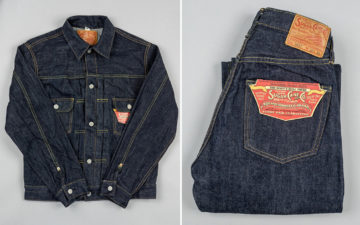These days you can pick off the rack any shade of denim in any condition, from pristine to beat-to-hell. As we know as well, raw options in today’s denim marketplace are the exception rather than the rule. But there was a time when there was no such term as “raw denim” because there was no other alternative.
Denim has a long history, dating back to the late nineteenth century, and it has come a very long way from its workwear roots. We always find it intriguing to explore the evolution of denim, and taking a look at the Found Collection at the Cone Mills White Oak plant allows us to do just that.
A Brief History
About four years ago, while in search of ginseng root north of Greensboro, North Carolina, a man named James Harlon discovered a two-room shack that once belonged to a family of sharecroppers. Within it, he found an immense collection of denim – forty pieces in total – that fell from the attic of the old frame house.
Initially, Harlon intended to turn the collection over to his sister to cut up and turn into handbags. Lucky for us, after four years he decided to give Cone a call. And so we have the collection now safe within the archives at White Oak. As some might recall, a couple of months ago we were able to take a firsthand look at some of the pieces from the collection at Liberty Fairs show in Las Vegas, Nevada.
The people at Cone Mills were gracious enough to give us an inside peak via their book on the Found Collection, which displays the entire collection piece-by-piece with a description of each. While it was tough to narrow down which pieces to highlight here, we’ve selected five (in no particular order) that we feel showcase the broad categorical range of the collection.
The Found Collection Pieces
As we mentioned above, this denim comes from a family who was working in the fields all the time, and their clothing bears the mark of their hard labor. Next time you’re feeling proud of putting your denim through the paces, take a minute to remember what these pieces went through. They’re beat up, but they’re beautiful.
Big Winston Overall Made of Cone Deeptone Denim Circa 1940
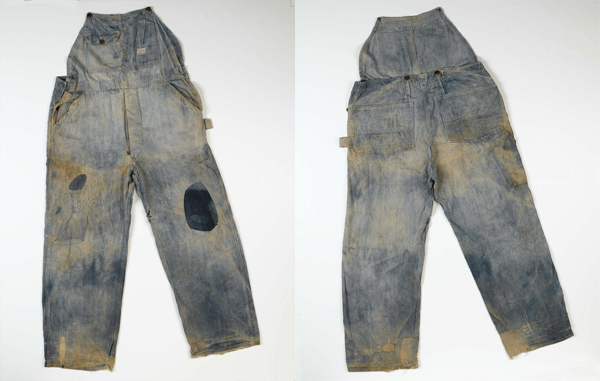
This overall was made with Cone Deeptone Denim, which was introduced in 1936 for the workwear market, hailed for its durability, its tough finish, and its color-staying ability. The original color was a deep blue, so you can see how far this pair has come. Some of the ads for the products using Deeptone read, “Improves your overall appearance”.
This particular pair is a low-back overall model with two-ply triangular reinforcement used to strengthen the straps. It features a number of hand-sewn patches and hand-stitched repairs, and, thanks to the wear pattern at the hem, we can see that the owner wore these cuffed.
Allen Waist Overall Circa 1940
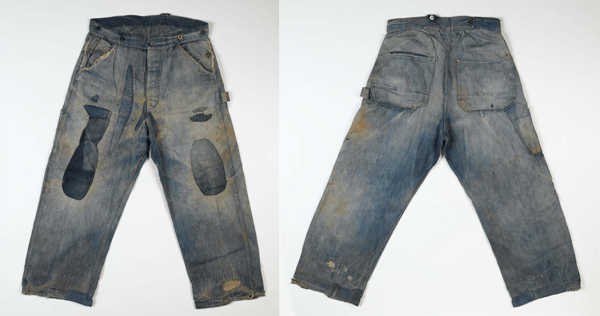
This pair looks more like what we’re used to when we think of jeans, but it was actually converted by hand into what was called a “waist-high overall”. You can see the triangular suspender reinforcement still intact on the back.
This pair was heavily beat up, as evidenced by the multiple patches and the plethora of stitching. If you look closely, you’ll also notice the mismatched suspender buttons on the waistband.
The Big Favorite Denim Jacket Circa 1930
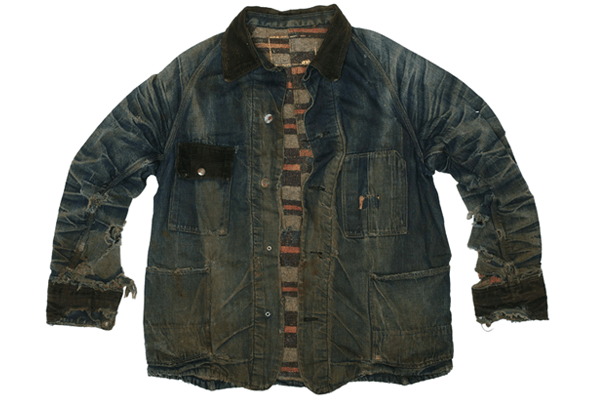
You can check out up-close-and-personal pictures of this piece in our coverage of the Cone booth at Liberty Fairs. It is a beauty: a chinstrap chore jacket with striped wool-blanket lining, with brown corduroy on the cuffs, collar, and pocket flap.
The chinstrap, also known as an extended-tab collar, is a special feature that kept the collar secure in inclement weather conditions. The jacket also features “ring button” shanks, named for the wire rings that are used to fasten the button to the placket.
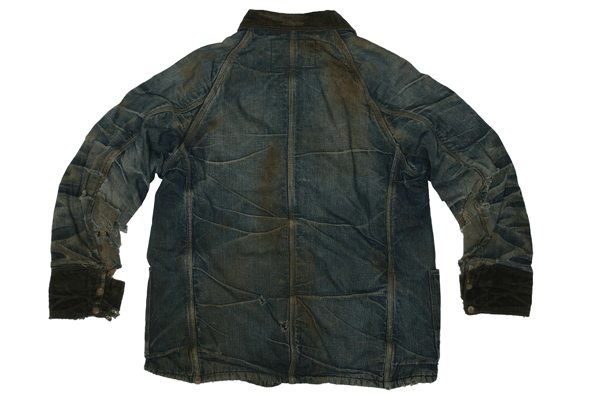
A cool bit of history: the buttons were designed to be easily removed so they could be replaced by railroad workers and engineers with the buttons of their company. The button system also aided in – quite literally – putting the jacket through the wringer to wash and dry. The fades on the arms and back will cause some serious envy in any denim enthusiast, and the shredding on the arms shows just how hard this bad boy was worn.
Hickory Stripe Shirt with Chambray Trim Circa 1940
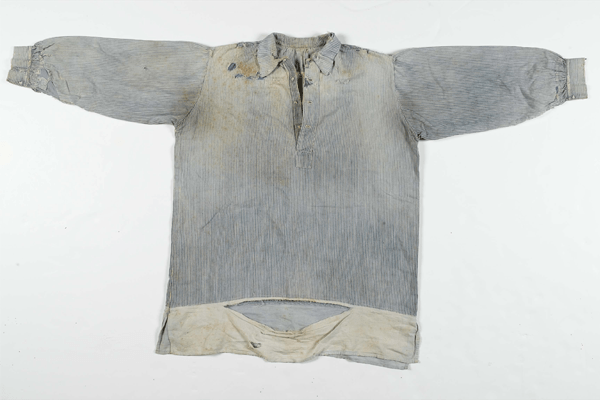
A basic popover design with classic hickory stripes, this garment is unique in that it lacks any industrial fasteners and features a “one-operation” style of sewing, all of which indicate that the shirt was either homemade or done by a local seamstress.
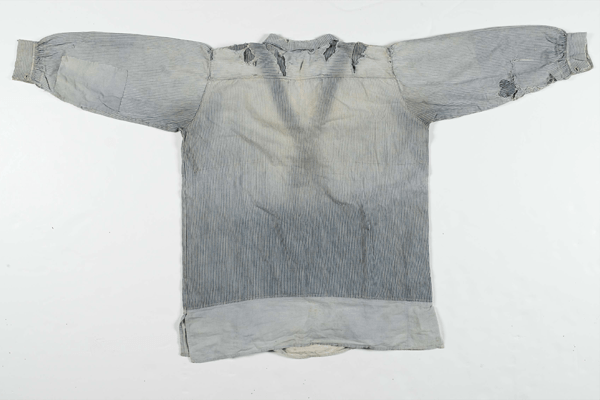
It features a plain-weave trim at the bottom, and you can see the patches and hand-stitched repairs. The sun bleaching shows the outline of the bib and suspender straps of a pair of overalls, evidence that this shirt spent a good deal of time outside.
Blue Bell Overall with Anvil Suspenders Circa 1940
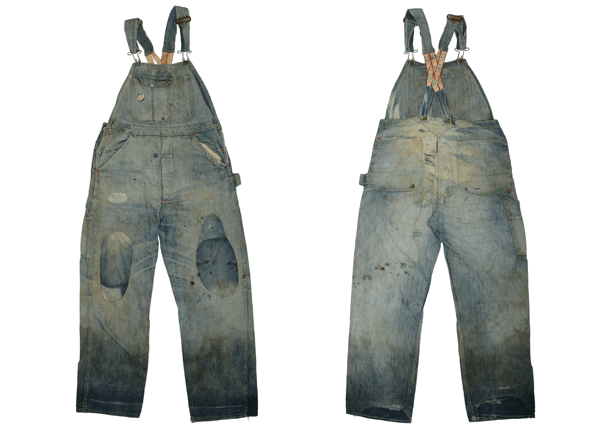
These overalls are a low-back model triangular-suspender reinforcement, with stamped buttons that say “Sanforized” or “Blue Bell.” You can see the printed Blue Bell label on the pocket. The heavy patchwork is evident, along with extensive repairs, as evidenced by the stitching throughout the piece.
The suspenders were taken from an Anvil Brand garment and transferred to the overalls. By examining the cuffs, we can see just how far the color has come since its original deeper blue.
The pieces we see here are workwear in its most literal definition, and it’s amazing to see the extremes to which denim as a material can be taken. The garments here and the Found Collection as a whole give us an invaluable glimpse into the past of denim; no amount of written history can compare to the genuine articles. We’re grateful to the folks at Cone Mills for housing pieces of denim history and allowing us to explore them.
